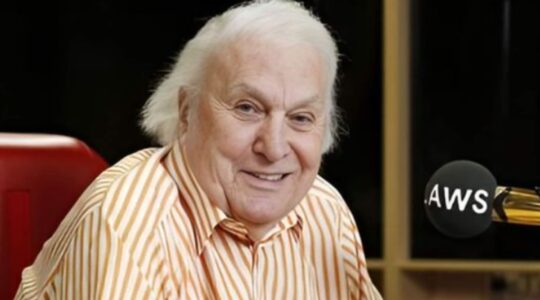By Shane Rodgers
Some 30 years ago media was a relatively simple beast. To reach big audiences you needed a radio or television licence, or a printing press and distribution system.
These were the domain of people and organisations with deep pockets. Similarly, outside of niche and local media and the “classifieds”, advertising also required big budgets.
Powerful media outlets reached literally millions of people and if you invested enough money fishing with the right advertising, there was a fair chance you would catch something.
Back then, “PR Agencies” as they were generally called, spent a lot of time working to access the free (or what we now called earned) side of media, hoping that journalists would write the story and, if they did, it would survive the editing process.
While mass audiences were controlled by the elite few, there was a strong economic model around media so companies could invest in large newsrooms with many journalists.
This helped support free speech, public accountability and coverage of community announcements and events.
In those days we had a genuine mass market. And it has been in decline ever since.
In 1953 when Lucille Ball gave birth on the Lucy Show, 74 percent of Americans with televisions were tuned in. Three years later 82 percent were glued onto the Ed Sullivan show when Elvis Presley made his first appearance.
Outside of a few big sporting events, we never see that type of concentrated media any more.
Even the media language has changed. In a single generation, our world has gone from a simple watch, listen and read to words like Googling, Face timing, Snapping, Podcasting, Pinging, Blogging, Vlogging, Zooming, Downloading and Tweeting (or is it Xing now).
The opening of media to the masses
In this environment the concept of a mass market has broken down and audiences have scattered. Anyone with access to a phone or a computer can now be a “media baron” and reach thousands, or even millions, of people across the globe.
Most of the really significant media brands have survived and remain influential, but audiences are now relatively small and niche rather than mass. In many cases they are aging.
Our colleagues in the US tell us that thousands of new media companies have started in that country in the past 10 years, but they mostly employ a tiny number of people and cover very niche subjects.
The Australia Institute Centre for Future Work estimates that 60,000 jobs were lost in information industries over 15 years. The Media Entertainment and Arts Alliance estimated that more than 5000 journalists left the industry in Australia in the five years to 2021 alone, mainly through redundancy.
In the same period 2300 jobs were lost in television and 650 in radio.
For anyone who was around in the 1980s, the media landscape was a very different place
If you held a press conference in Brisbane 30 journos might turn up – Local TV news, most radio stations had newsrooms, there were three local current affairs programs and five local newspapers, if you counted the Sunday papers, wire services and specialist media.
Even 20 years ago, when I was Editor-in-Chief of Quest Newspapers, we had more than 20 titles. These were delivered to nearly 90 percent of Greater Brisbane households and independent research consistent showed 67 percent of the population read them. We have nothing like that now.
15 years ago, when I was Editorial Director of APN Regional Media, we had more than 50 titles that dominated local regions across Qld and northern NSW.
At its peak, in Australia we had many thousands of journalists, a lot of them genuine experts in their fields and there was genuine scrutiny – a commitment to “keep the bastards honest”, even when there was no commercial return in that.
Today newsrooms are tiny shells of their former selves. The traditional licences to print money and the rivers of gold are gone. Audiences are fragmented across hundreds of different information sources – customised to audiences and rarely curated for accuracy.
Even the mindset around news has changed. An ongoing survey by Reuters across 17 countries has found that only about eight percent of people are prepared to pay for news.
In recent years, its survey has tapped into a phenomenon called “new avoidance” – where people deliberately turn off issued-based news. Since 2015, the percentage of people across all age groups who say they are “very interested” in news has dropped a whopping 20 percent.
Contrast this with the social media environment, where most of the contemporary “news” and information engagement happens. Influencers like soccer star Cristiano Rinaldo have followings in the hundreds of millions, numbers unheard of even in the heady days of media.
I personally once wrote a LinkedIn article that was read by 6.3 million people. Nothing I did as a traditional media journalist ever matched that.
Where Newsreel fits in
I would like to say that Newsreel is going to sweep in and restore the golden age of news and issues media. That might be a big call.
What Newsreel does is fill an essential missing link in the media market that is a consequence of some of these changes.
That is:
- There still needs to be objective and accurate coverage of things that have been announced today. That used to be 80 percent of most news coverage. Much of this simple coverage has fallen off in a world of shrinking newsrooms.
- A lot of basic coverage is behind paywalls that most Australians won’t pay for. Newsreel is free and open source.
- When people are looking for information, they will generally start with search. Newsreel is highly search friendly and when you find the content you are not locked out of it.
- In the modern 24-hour news cycle, stories can move so quickly that the original announcement or facts can get lost in a world of frenzied comment. Newsreel is less worried about being first and more concerned at providing sane, objective facts, directly from the source.
- There are a lot of sites that just publish media releases. Newsreel does not do that. We edit and curate to make it easy for audiences to find the basic facts.
- Modern media consumers are far less likely to visit a brand or a masthead in one place. So-called “news rituals” are in decline. That is why Newsreel is an eclectic platform that is happy to go to an audiences, wherever they are – search, on as core website or in shorter story versions on social media.
- The mass shift of communication professionals from journalism to corporate communication means there is a rich amount of quality content available that never makes it to traditional media sites because newsrooms are not equipped to process it. Newsreel treats this as a valuable, underutilised information source.
Instead of traditional advertising, our revenue comes from commercial content partnerships (advertorial or sponsored content in the old language). In keeping with ethical standards, partner copy is clearly identified, we only partner with credible organisations and we only publish content we believe to be true.
For partners, content is boosted directly to target audiences and can easily be found through search. It becomes an enduring, quality information asset with no paywall.
In other words, Newsreel allows you to reach your audience simply in a world where the information superstorm is loud and messy.
Shane Rodgers is the Founding Publisher of the Newsreel news and information platform. This is an extract of his speech at the formal launch of the platform this week.








